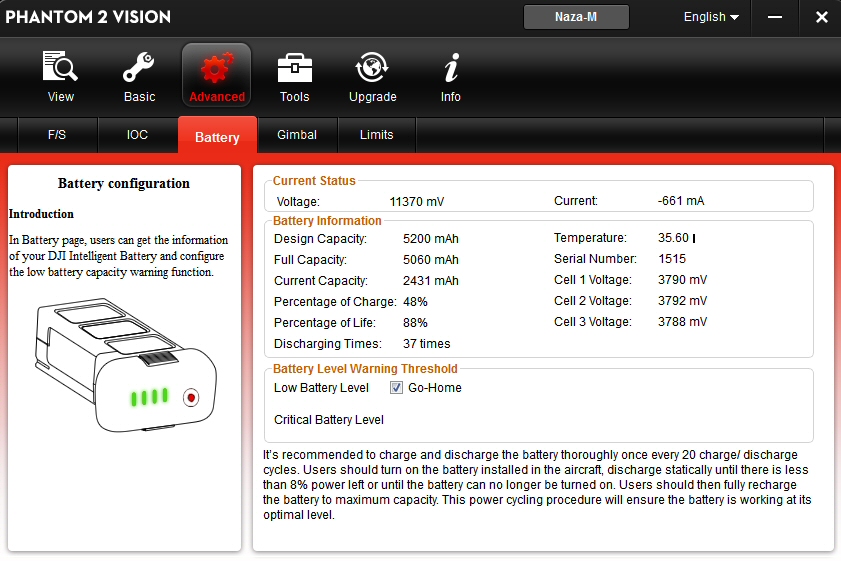One thing I noticed is that if you take off with a battery that is NOT fully charged you get an early autoland every time. I wonder if the software does a calculation based on the charge it thinks is at 100% but is being fooled by the lower actual data value and using that as its "100%". This would be a bug in the under-load part of their software that assumes 100% at startup. In other words that battery is expected to be 100% but the actual under-load charge is far less than indicated or expected. One way the autoland trigger could be initiated early is if the battery management software works as follows:
If the battery cell voltages are sampled at a finite rate under load say perhaps once every ten seconds or so then perhaps the software builds a dynamic discharging curve as it flies. If it does, then I can easily see how this could cause the Phantom2 to autoland early if it starts with an erroneous "100%" value.
The reason this might happen is if that decision to autoland is actually a dual decision based on periodic battery sampling and any such calculated discharge curve it builds dynamically during flight. If this is true then it will land early if it weights such a dynamically calculated discharge curve highly.
If I was creating battery management software I would build such a curve dynamically and weight it heavily because a fully charged battery would not provide anything but a 100% apparent status. But of course, its the discharge rate under load I would care about so creating a dynamic curve each flight would help gauge battery life per flight and allow a predictive autoland trigger. Depending on what components you are flying, such as cameras, OSDs, or more the predictive discharge curve becomes all the more important over the life of the battery.
Additionally I would give each battery a unique identifier that is user settable and store that data within each 'smart' battery in nonvolatile memory so that I could consult that data as needed. This would allow a 'black box' battery lifetime data capability that you can use to examine each specific battery and project remaining life. This would be VERY important if you are carrying a lot of high end equipment. For our drone work we are going to implement an energy management procedure that is similar but we are planning on carrying VERY high end equipment so it is essential to spend a couple weeks working out a battery management system that removes ANYONE on our team from the disaster equation. Putting in an older battery and expecting it to last as long as a newer battery on a critical task is something HUMANS do. The system should not allow you to do that.

. Having performance discharge curves available offline as a downloadable from the GUI at the computer is absolutely critical now. I foresee being able to put in a battery and seeing a projected flight time show up before you take off. This is NOT hard to do. It just has to be done...
This all relates to the autoland issue I am SURE. I do think it is a likely bug in their rudimentary under-load management software.






